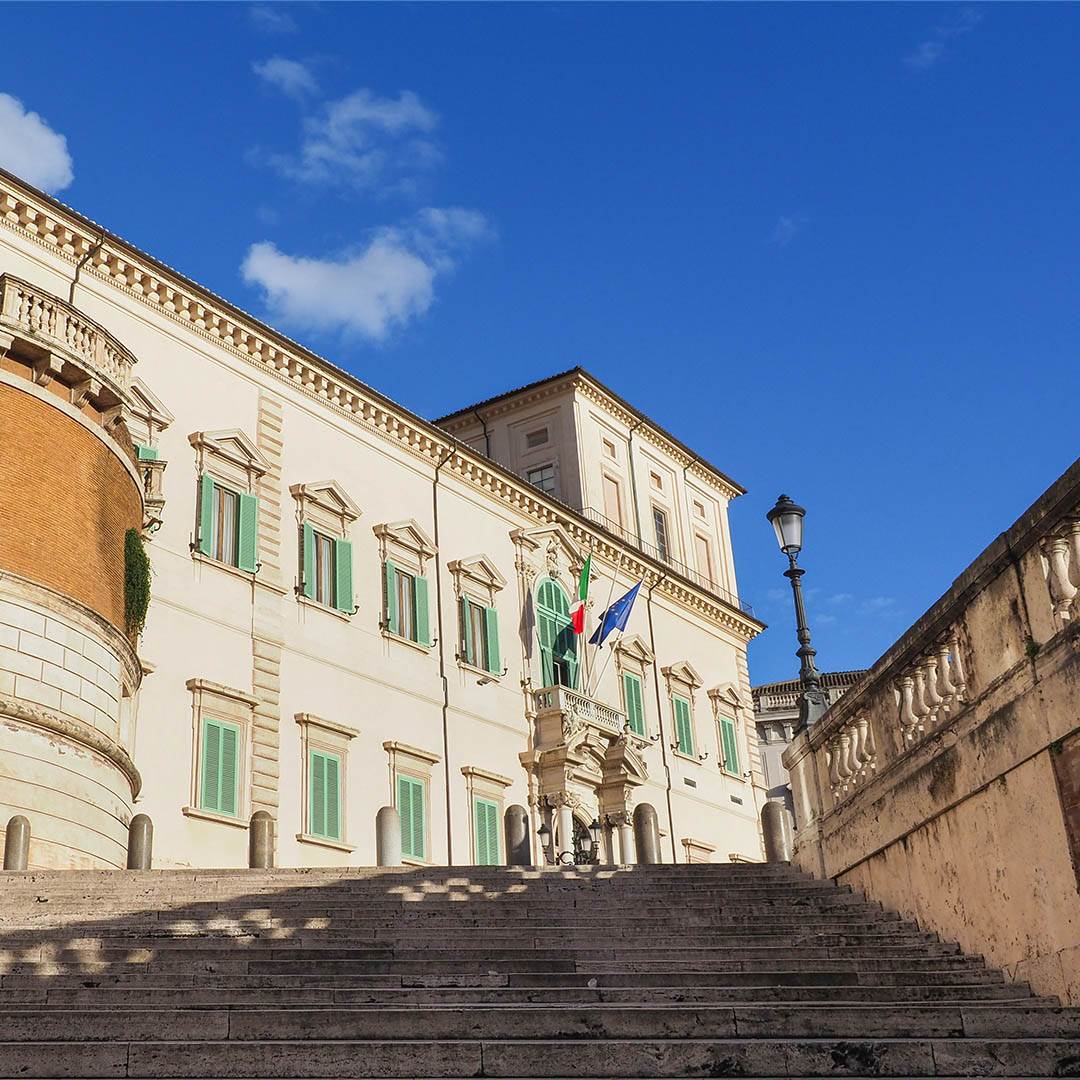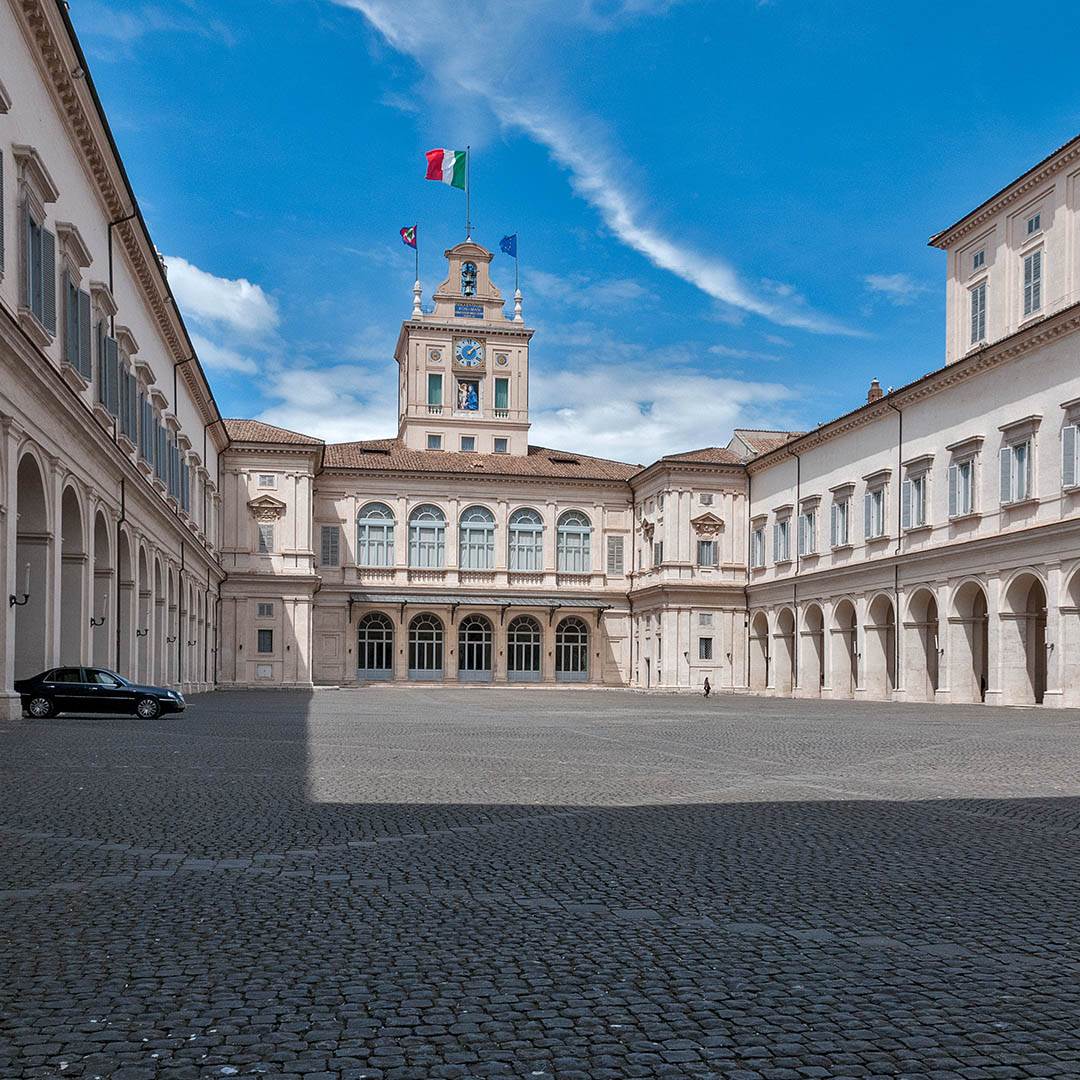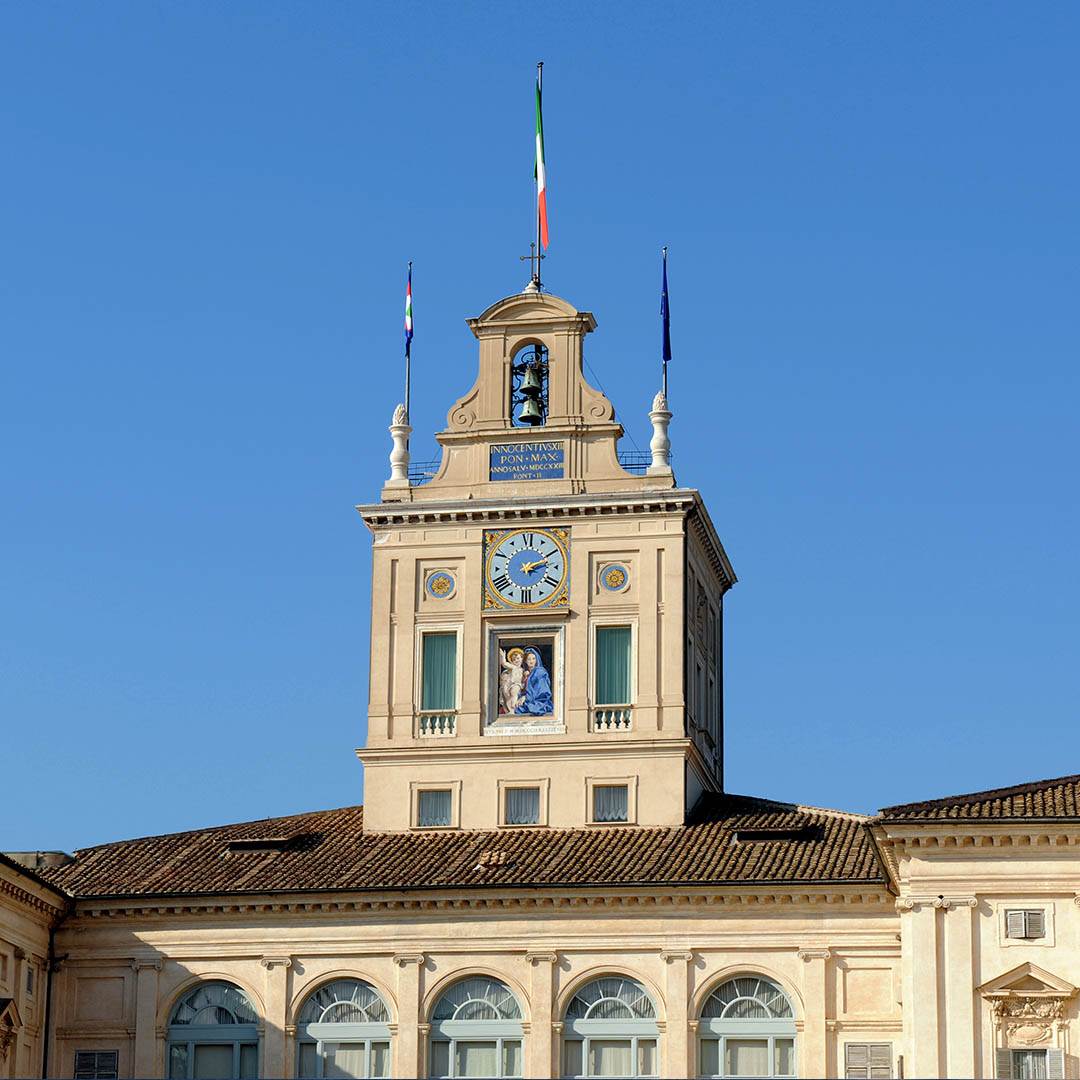The Quirinal Palace
A visit to the Palace of the President of the Republic, a mix of astonishment and curiosity
In Rome it is possible to visit the Quirinal Palace, seat of the highest office of the State, and more. Indeed, the Palace is not only the residence of the President of the Republic, but is one of the places where the threads of politics are woven, as well as being a concentration of art, culture and history of inestimable value, which cannot fail to provoke a thrill of awe and admiration. Yet it is also a site that holds something familiar, because it is the very heart of the res publica, of the thing that belongs to the people, and therefore it is also the home of Italians. The Quirinal Palace is located in the centre of Rome, atop the hill of the same name (one of the seven famous hills of Rome) and is one of the largest palaces in the world. Just to give you an idea, at 110,550 square metres it is twenty times larger than the White House. Perhaps not everyone knows that before being the residence of the President of the Republic, it used to be the residence of Popes and the royal palace of the Savoy household. In almost five hundred years of history, as many as 30 popes, 4 kings and 12 presidents, including Sergio Mattarella, have succeeded one another there. The current structure dates back to Renaissance times and various popes – Pope Gregory XIII, Sixtus V, Clement VIII and Paul V – were responsible for the main architectural interventions, such as the addition of the solemn Scalone d’Onore. Equally symbolic is the Cortile d’Onore, the first space that welcomes visitors when they enter, resembling a large porticoed square surrounded by harmonious and uniform buildings, although it was built in four successive phases between the late sixteenth and early seventeenth centuries. Over the years it has been, and still is, the backdrop for prestigious ceremonies during visits by foreign heads of state.

The Pauline Chapel, a copy of the Sistine Chapel
Who would ever think that within the Quirinal Palace there is a chapel as large as the Sistine Chapel? It was Pope Paul V (hence the name Pauline Chapel) who wanted it to be identical to the one decorated by Michelangelo, with 545 square metres of surface area and a height of 19.6 metres, so that he could officiate either at the Quirinal Palace or at the Vatican. Four conclaves were held in the Chapel, the last of which led to the election of Pope Pius IX, who remained in office for over 31 years: at his death, the Quirinal Palace changed tenants, opening its doors to Victor Emmanuel II, the first king of Italy. Another jewel of the Palace is the Chapel of the Annunziata, frescoed by Guido Reni.

The Salone delle Feste and Galileo Galilei’s prison
As one wanders through the palace, a succession of sumptuous rooms reveals dazzling marvels marked by wealth and nobility. The Salone delle Feste, for example, extends over an area of 345 square metres, and is lined with gilded stuccoes and frescoes and – a detail that certainly does not go unnoticed – a Guinness World Record-breaking carpet of almost 300 square metres, weighing 900 kg. This was made on-site because it was inconceivable that it be moved there. Only now, with great effort, has it been removed for restoration; in its place the original nineteenth-century parquet floor has returned resplendent to the eyes of visitors. Three enormous crystal chandeliers hang from the ceiling of the 15-metre-high salon. And until a few decades ago, the orchestra used to perform on the balcony halfway up the wall for the King and his court. To get to the stage, one had to pass by an internal staircase through an eerie warren of tunnels that once served as prison cells. A curious detail: it is said that Galileo Galilei was imprisoned in one of these cells after being tried in the court set up by the Inquisition.
The Salone dei Corazzieri, king’s tennis court, and the bookcases in the library
Another magnificent space is the Salone dei Corazzieri, the largest and most solemn in the Quirinal Palace, a true marvel of over 400 square metres of polychrome marble with a 15-metre-high coffered ceiling that mirrors the geometric patterns of the floor. Currently, ceremonies and audiences of the Head of State are held here, but in the early twentieth century it served for a time first as a skating rink and then as an indoor tennis court for royalty. Another high point of the palace is the library, with the marvellous bookcases by the great cabinet-maker Pietro Piffetti (whose signature is on one of the tortoiseshell-covered consoles in the room), containing volumes bearing the Savoy coat of arms and dedications to Queen Margaret of Savoy.

The Gardens
Entering via the Porta Giardini, in the midst of well-kept paths, flowerbeds and hedges with rare and exotic botanical species, one seems to immerse oneself in an oasis in the heart of the capital. These are the Palace Gardens: four hectares of greenery forming an integral part of the history and beauty of the place. Here one also finds the spectacular Fountain of the Organ with its riot of mosaics, stuccoes and statues alternating stories of Moses with gods and sea creatures, and famous for its music systems operated by falling water; a place to take your breath away. At the most panoramic point, overlooking the city from the edge of the hill, the architect Ferdinando Fuga built the Coffee House: an informal meeting place, fronted by the Caserta Fountain, and its three female figures from the park of the Royal Palace of Caserta. Among the most unusual sights to be found in the Gardens is the oval boxwood labyrinth with a small obelisk in the centre. And a trapdoor near the Boschetto, constituting the entrance to an ancient Roman domus.

The Torrino
The Torrino is the belvedere of the Quirinal, as inaccessible as it is iconic. The 52-metre-high tower was commissioned by Pope Gregory XIII in the sixteenth century, with the aim of assuring a view of the sea. And it is true that the view provides a breathtaking panorama encompassing the Victor Emanuel II monument, the Pantheon, St Peter’s and the Colosseum. On the Torrino, the Italian flag, the European flag and the presidential banner fly side by side. The latter is hoisted when the President of the Republic is at the Palace, rather like the royal standard at Buckingham Palace that flies when the regnant is in residence.

The Quirinale Contemporaneo project
A visit to the Quirinal Palace is also possible thanks to the collaboration of volunteers of Touring Club Italiano, who accompany the public in their discovery of its rooms, its history and its ever-changing artistic heritage. With the Quirinale Contemporaneo project the artistic heritage of the place has been recently enriched with works from the Republican years granted by foundations, artists and designers creating harmonious dialogues and contrasts: Giacomo Manzù appears alongside the cabinetmaker Brustolon, Alberto Burri meets with Pietro da Cortona, and objects by Achille Castiglioni, Gae Aulenti, Michele De Lucchi or Vico Magistretti are dotted around the palace, celebrating the excellence of Italian design.
in partnership with![]()
USEFUL INFO
Distance from Castel Romano Designer Outlet to central Rome: approx. 25 km; travel time about 45 min.
Palazzo del Quirinale, via del Quirinale, tel. 0639967557, www.quirinale.it – Visits by appointment only. Thanks to the volunteers of the Touring Club Italiano, as part of the Aperti per Voi (Open for You) initiative, special visits are planned

Eat & Stay
Extending your trip to Rome and needing somewhere to stay? Here are some of our favourite places you might wish to consider…in order to make your vacation even more special and unforgettable.
Plan Your Visit
To Castel Romano


